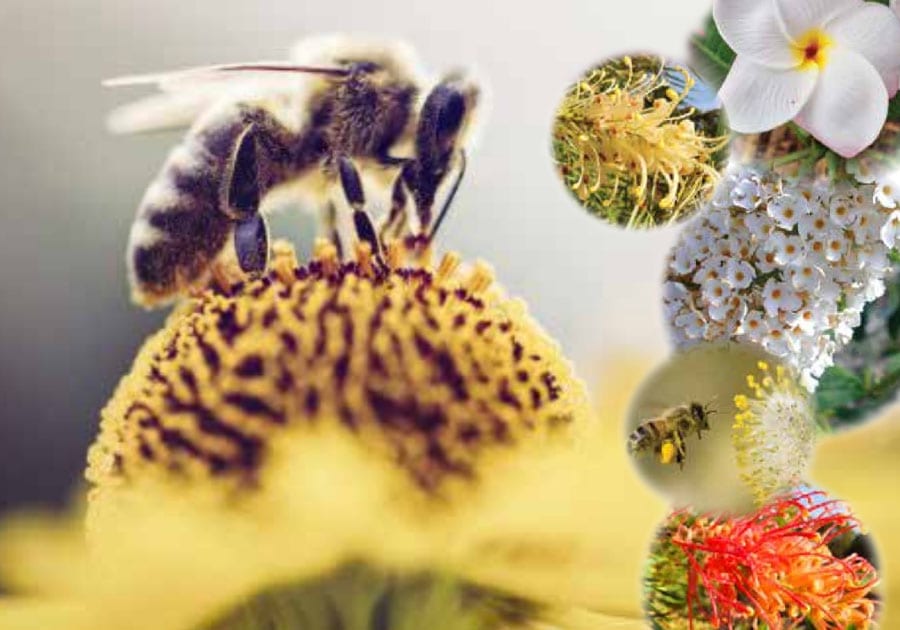A KEY INGREDIENT TO A HEALTHY GARDEN IS POLLINATION.
There are various ways a flower can be pollinated and the most well-known is the humble bee, either native or introduced.
Native bees are Australia’s wildflowers best friend. Did you know there are about 2000 species of native bees, some as small as 2mm in length, that primarily make the tropical regions their home? The smaller ones are perfect for pollinating those tiny floral gems in your garden. Some native bee varieties live in tree hollows but the majority are solitary dwellers, preferring to make timber cracks or holes in the ground their home.
European Honey Bees are more commonly recognised in our coastal gardens. They are ideal for commercially grown honey due to the larger volume of honey produced when compared to native bees. When introduced in the late 1800s, some escaped into the wild and they became a key part of our pollination landscape. In recent times though, these bee numbers have dwindled due to changes in the environment and attacks from pests.
Moths are another group of pollinators that are usually forgotten. They work their magic on plants whose flowers only open at night, like the pawpaw. A Tasmanian vegetable grower has used flies to pollinate their cauliflower crop. He attracts the flies using rotting carcases to grow their maggot babies.
Native birds also provide a valuable pollinating service when feeding on flowers. They get covered in pollen and then disperse it between flowers.
Butterflies & the humble flies help pollinate the native plants they are feasting on. Imagine a world without avocados or coffee beans – how would the Hipsters cope?
Did you know that a commercial grower in NSW is trialling a robot buzz pollinator in their greenhouse environment? The robot will identify the plant’s flower and then direct pulses of air at it to simulate the buzzing of a pollinating bee, causing the pollen to be released and drop down further into the flower.
Frangipanis, magnolias and Lilly Pilly are great food sources for bees. To encourage butterflies, you’ll need plants for them to feast on – Pentas are a popular choice. Rainbow Lorikeets love Grevilleas and flowering gums.
As with all living creatures, year-round food supply is essential so factor in a healthy biodiverse selection of plants & trees and you’ll find our local pollinators will be regular visitors to your outdoor patch.
